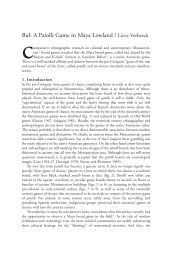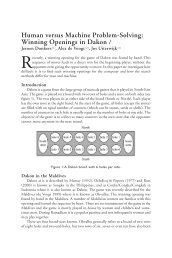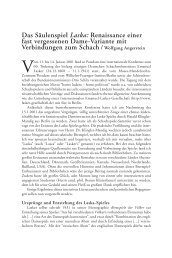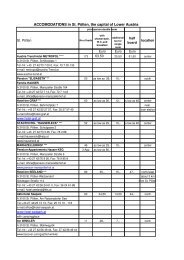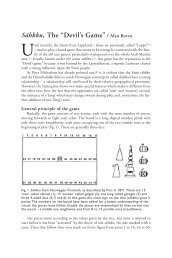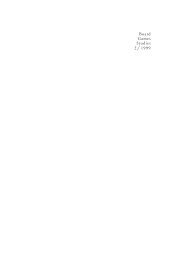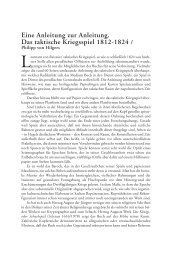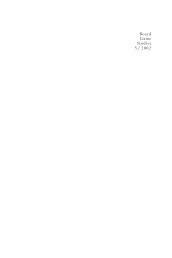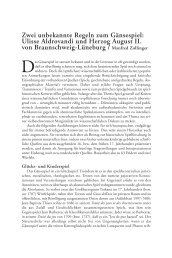“Juden Raus!” (Jews Out!) – History's most - Board Game Studies
“Juden Raus!” (Jews Out!) – History's most - Board Game Studies
“Juden Raus!” (Jews Out!) – History's most - Board Game Studies
Create successful ePaper yourself
Turn your PDF publications into a flip-book with our unique Google optimized e-Paper software.
50<br />
B OARD G AME S TUDIES 6, 2003<br />
“carnival’s procession<strong>”</strong> was typical Nazi cynicism making a joke out of the Exodus story<br />
from the Bible. (2) The fact that the expulsion of the <strong>Jews</strong> has been made a subject of the<br />
procession seems to fit very well into the general theme and graphic imagery of the game<br />
and may have inspired the games anonymous author.<br />
There are two types of game pieces. The “men<strong>”</strong> clearly represent the German Police<br />
and can be identified by the coat and belt drawn on the pieces, as well as the cone like<br />
hat, buttons and boots which appear very similar to the uniforms worn by the German<br />
police at the time (Berenbaum 1993). The pieces are made of painted wood, and measure<br />
5.8 cm x 1.8 cm. (figure 2). The “hats<strong>”</strong> are 3.5 cm in height, 1 cm in diameter and<br />
are made of paper and may have yellowed with age. The faces on the hats are drawings<br />
of grotesque stereotypes of Jewish facial features similar to those drawn on the game<br />
board. One copy of the game has a leather beaker for throwing dice but Mr. Barkow<br />
was uncertain whether this came with the game or was added by the anonymous donor.<br />
<strong>Game</strong> Rules [as translated from the German] (figs. 3 & 4) (3)<br />
“JEWS OUT!<br />
The up-to-date and outstandingly jolly party game for grown-ups and children.<br />
From 2 to 6 players can take part in this extraordinarily amusing and up-to-date<br />
family game.<br />
Equipment: 1 die, 6 figures and 36 little hats. Each player takes one of the figures<br />
numbered 1 to 6.<br />
The method of play is as follows:<br />
Each player rolls the die and places his figure on the start-square of the street whose<br />
number is equivalent to that of the number thrown. Whoever occupies Street One is<br />
the leader and plays first. Each in turn then rolls the die and moves his figure the appropriate<br />
number of spaces towards the central square. If, having crossed the town wall, he<br />
lands on a square marked with a Jewish house, he gets a hat from the game leader and<br />
caps his figure with it. On his next throw he starts moving his figure back towards the<br />
collection-point and hands the hat back in. If a player has thrown a six (for example) and<br />
is now three spaces away from the collection point, he can hand the hat in and then go<br />
forwards three spaces. This coming and going between the town wall and the central<br />
square continues until one player has got six hats over to the collection point. Having<br />
handed in his sixth hat, he then goes back over the numbered squares to the central<br />
square. The first to do this wins First Prize. The other players can either carry on playing<br />
for position, or divide the remaining prizes among themselves according to how<br />
many hats they managed to collect.<br />
Another method of play:<br />
When a figure has been capped, the person playing it continues moving forwards,<br />
according to the number thrown, towards the central square. If he there encounters<br />
another figure with a hat or hats, he can capture its hat or hats and bring them back to<br />
his own collection point. In following this method of play, it is possible for a player who



